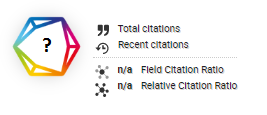PEMANFAATAN INTERNET OF THINGS DALAM RANCANG BANGUN SISTEM INFORMASI PENGAWASAN BUS PADA TERMINAL BUS BERBASIS ARDUINO UNO DAN NODE MCU
DOI:
https://doi.org/10.46984/sebatik.v24i2.1061Keywords:
Arduino Uno, NodeMCU, Internet of Things, RFID, Servo, WebsiteAbstract
Keberadaan bus di dalam terminal bus sendiri terkadang membuat penumpang kesulitan mencari informasi yang pasti. Seperti contohnya pada saat penumpang masih di perjalanan menuju terminal bus, penumpang tidak mengetahui apakah bus yang ingin dinaiki sudah datang atau belum. Atau pada saat penumpang menunggu di terminal bus terkadang penumpang tidak tau apakah bus yang penumpang ingin naiki sudah datang atau belum. Dengan semakin berkembangnya teknologi dan meningkatnya penumpang bus, maka diperlukan suatu sistem informasi untuk menunjukkan keberadaan bus yang ada di suatu terminal bus. Alat ini menggunakan mikrokontrolermikrokontroler Arduino Uno sebagai komponen pengendali dan NodeMCU dan memakai beberapa komponen yang digunakan adalah RFID dan motor servo. Penelitian ini melakukan penampilan informasi ketersediaan bus dan data bus seperti rute tujuan, waktu dan keterangan pada website secara realtime, dan mengukur respons waktu untuk mengubah database pada website menggunakan ISP CBN Google Station dan provider 3 4G. Hasil rata-rata respons waktu yang diperoleh pada penelitian ini 2,0167 detik untuk CBN Google Station dan 2,083 detik untuk provider 3 4G. Penelitian ini telah berhasil memantau halte melalui sistem monitoring bus pada website secara real-time.
References
Eko Prasetyo, I.A., & Kartadie, R. 2019. Sistem Keamanan Area Parkir STKIP PGRI Tulungagung Berbasis Radio Frequency Identification (RFID). JoEICT (Journal of Education And ICT), 3(1).
Damayanti, R., 2016. Aplikasi Motor Servo Pada Prototipe Pintu Rumah Otomatis POLITEKNIK NEGERI SRIWIJAYA).
Firdaus, M.W., 2019. Pembangunan Prototipe Sistem Monitoring Lele Care Dengan Daya Listrik Menggunakan Lcd Thin Film Transistor (Tft) Touchscreen Berbasis Arduino Mega2560 (Doctoral dissertation, Alternatif Di Budidaya Bakti Mandiri (Doctoral dissertation, Universitas Komputer Indonesia).
Kusnandar, N.K.H.D. & Andreawan, S., 2019. Perancangan Prototipe Pintu Gerbang UNJANI Keluar Masuk Kendaraan Menggunakan RFID Berbasis Mikrokontroller ATmega32
Mulyatun, S. & Choirul, A.F., 2019. Efesiensi Penerapan Sistem Pendukung Pada Lahan Parkir Dengan Memanfaatkan RFID (Radio Frequency Identification) Pada Kartu Tanda Mahasiswa. INTECHNO Journal-Information Technology Journal, 1(2), pp.36-42
Nugroho, A.K. & Al Farisi, S., 2019. Prototipe Sistem Kendali Pagar Jalur Transjakarta dengan Sensor Radio Frequency Berbasis Internet of Things. AUTOCRACY: Jurnal Otomasi, Kendali, dan Aplikasi Industri, 6(01), pp.22-26.
Pratama, B. & Riyanto, S., 2020. Perancangan Aplikasi Gerbang Absensi Siswa Berbasis Web dan Arduino di SMK Negeri Kare (Studi Kasus Pada SMK Negeri Kare). DoubleClick: Journal of Computer and Information Technology, 3(2), pp.91-97
Rohman, A, Z, 2015, Rancang Bangun Alat Ukur Getaran Mesin Berbasis Arduino, Jurusan Teknik Elektro, Universitas Negeri Semarang.
Santoso, H, 2015, Panduan Praktis Arduino untuk Pemula. Diakses pada tanggal 12 April 2017 dari www.elangsakti.com
Suja, I. 2014. Pemrograman SQL dan Database server MySQL. Jakarta : Andi Publisher.
Syahwil, M. 2017. Panduan Mudah Belajar Arduino Menggunakan Simulasi Proteus. Jakarta: Andi Publisher.
Wagyana, A. & Zulhelman, Z., 2016. Prototipe smart power outlet untuk pencegah kebakaran akibat arus listrik. SENTIA 2016, 8(2).
Downloads
Published
How to Cite
Issue
Section
License
Authors retain all their rights to the published works, such as (but not limited to) the following rights; Copyright and other proprietary rights relating to the article, such as patent rights, The right to use the substance of the article in own future works, including lectures and books, The right to reproduce the article for own purposes, The right to self-archive the article








